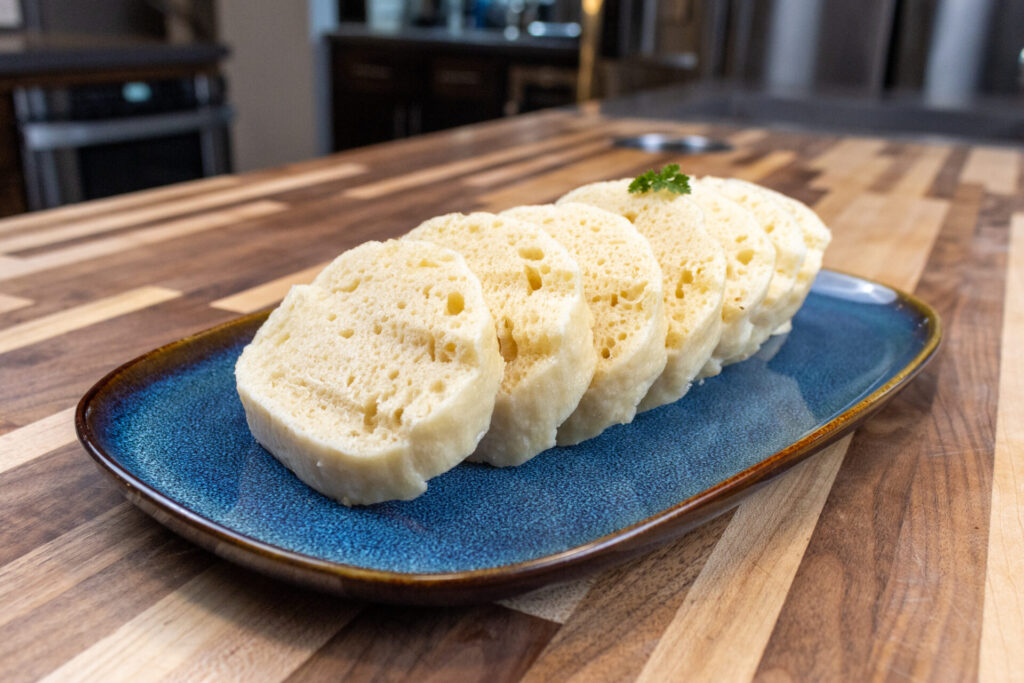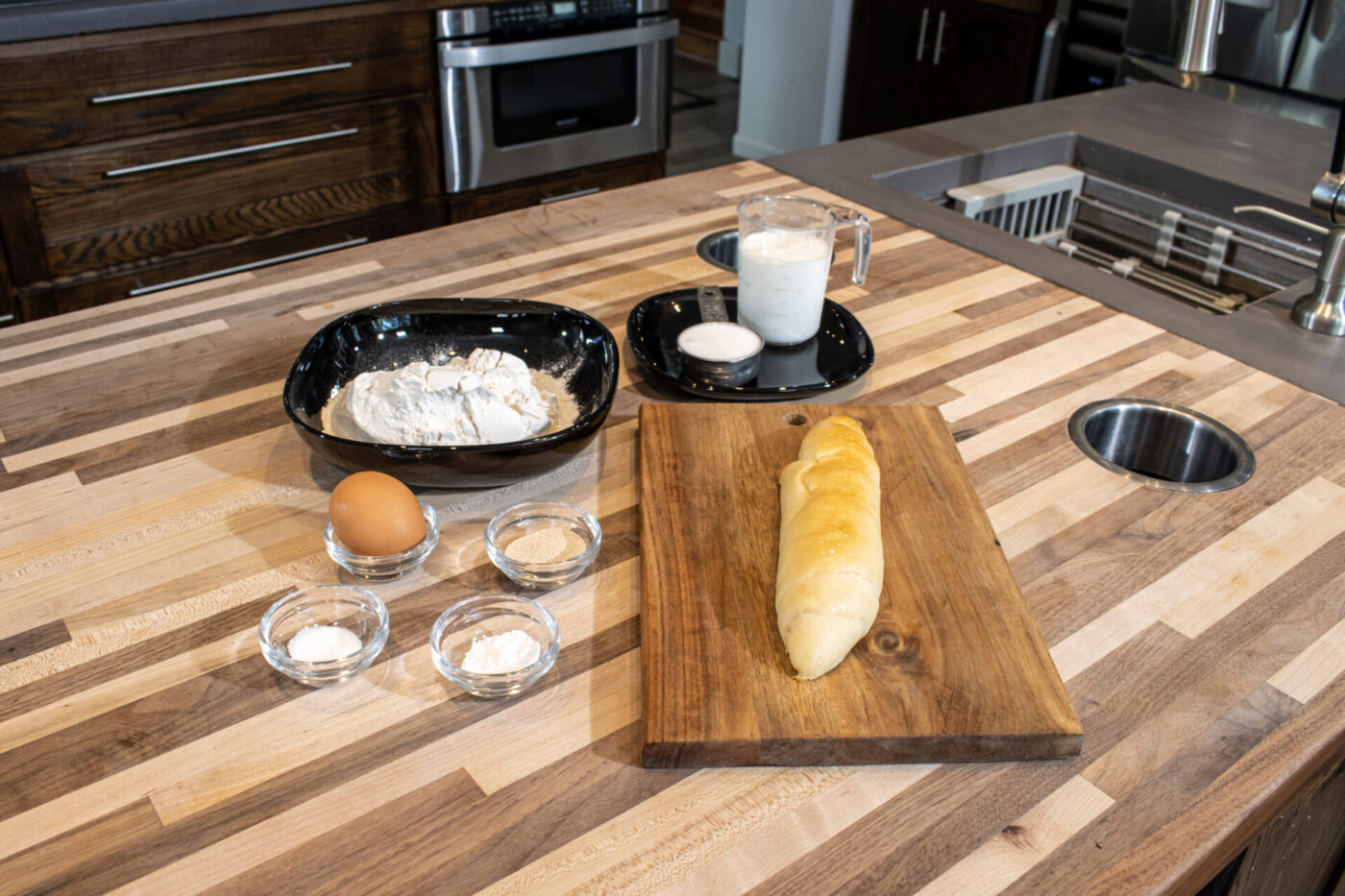The Czech Republic, a land steeped in history, folklore, and hearty culinary traditions, offers a dish that’s as comforting as a warm embrace on a snowy Prague evening: the Houskový Knedlík. This seemingly simple bread dumpling, a staple on Czech tables for centuries, is a testament to the resourcefulness and ingenuity of Czech cooks. While it may appear unassuming at first glance, the Houskový Knedlík is a culinary masterpiece, a symphony of textures and flavors that perfectly complements the rich sauces and savory meats that define Czech cuisine.
More than just a side dish, Houskový Knedlík is an integral part of the Czech culinary identity. It’s a symbol of home, of family gatherings, and of the deep connection between food and culture. Imagine yourself in a traditional Czech pub, the aroma of roasted pork and simmering goulash filling the air. A plate arrives, laden with tender meat, a pool of rich gravy, and a generous slice of Houskový Knedlík. You take a bite, and the dumpling yields effortlessly, its fluffy interior soaking up the flavors of the sauce like a sponge. It’s a culinary experience that transcends mere sustenance; it’s a journey into the heart and soul of Czech cuisine.
From Stale Bread to Culinary Gold: The Alchemy of Houskový Knedlík
The journey of Houskový Knedlík begins with an unlikely hero: stale bread. In the true spirit of resourcefulness, Czech cooks discovered that day-old bread, even the slightly hardened loaves, could be transformed into a culinary delight. This ingenious use of leftover bread not only minimized waste but also created a dumpling with a unique texture and flavor.
We begin our own Houskový Knedlík adventure by dicing the stale bread into small, manageable pieces, about ½ to 1 inch in size. These bread crumbs are then placed in a mixing bowl and moistened with a splash of milk. This simple step softens the bread, preparing it for its transformation into dough.
The Birth of Dough: A Symphony of Flour, Yeast, and Milk
While the bread is soaking, we turn our attention to the foundation of our dumpling: the dough. In the bowl of our trusty stand mixer, we combine bread flour, a touch of confectioners’ sugar for the yeast to feast on, active dry yeast, and a pinch of salt. A quick whisk ensures these dry ingredients are evenly distributed, creating a harmonious blend.
Next, we introduce a large egg and lukewarm milk to the dry ingredients. The mixer, fitted with its dough hook attachment, takes over the laborious task of kneading. The dough gradually transforms from a shaggy mass into a smooth, elastic ball, its gluten strands developing strength and resilience.
Now, it’s time to reunite our bread and milk mixture with the dough. The mixer gently incorporates the bread, ensuring it’s evenly distributed throughout the dough. This marriage of old bread and fresh dough is the essence of Houskový Knedlík, a testament to the ingenuity of Czech cooks.
With the dough fully formed, we transfer it to a clean bowl, cover it with plastic wrap, and place it in a warm corner of our kitchen. Here, the magic of yeast unfolds. The dough slowly awakens, its volume doubling as the yeast ferments the sugars, releasing carbon dioxide and creating air pockets within the dough. This rising process, a testament to the power of microscopic organisms, is crucial for achieving the light and airy texture that defines Houskový Knedlík.
Shaping the Dumplings: A Delicate Dance with Dough
After a patient wait, our dough has risen to its full glory, a puffy testament to the power of yeast. We gently deflate the dough and divide it into two or more portions, depending on the size of our pot and our desired dumpling length. Shorter dumplings are easier to handle during cooking, while longer dumplings offer a more dramatic presentation.
On a lightly floured surface, we gently coax each portion of dough into a smooth, log-shaped dumpling. The thickness is a matter of personal preference, but a diameter of about 2 ½ inches is a good starting point. The dumplings, plump and promising, are then placed on a lightly floured cutting board, covered with a dish towel, and allowed to rest for a brief 15-30 minutes. This final rest allows the gluten to relax, ensuring a tender and yielding dumpling.
The Grand Finale: Cooking the Houskový Knedlík
As our dumplings enjoy their final repose, we prepare a large pot of boiling water. The water bubbles with anticipation, ready to embrace the dumplings and complete their transformation. With a gentle hand, we slide the dumplings into the churning water, cover the pot, and allow them to simmer until they reach an internal temperature of 165°F. This typically takes about 6-9 minutes per side, depending on the thickness and density of the dumplings.
During cooking, we carefully turn the dumplings, using two forks or a large turner, ensuring they cook evenly on all sides. Once cooked through, we gently lift them from the pot and pierce them with a fork in several places. This allows steam to escape, preventing the dumplings from becoming soggy. A brush of oil keeps the dumplings moist and adds a subtle sheen.
Houskový Knedlík: A Culinary Triumph
After a brief rest, our Houskový Knedlík is ready for its grand debut. We slice the dumplings into rounds, revealing their fluffy interiors and inviting aromas. Whether accompanying a rich goulash, a savory roast, or a creamy vegetable stew, this Bohemian delight is the perfect companion, its mild flavor and tender texture complementing a wide range of dishes.
So, gather your ingredients, embrace the challenge, and embark on your own Houskový Knedlík adventure. With a little patience, a touch of Czech spirit, and a love for good food, you’ll be rewarded with a culinary masterpiece that’s sure to become a cherished part of your culinary repertoire.
Read less







Share
Click on the icons below to share "Title of the item to share"